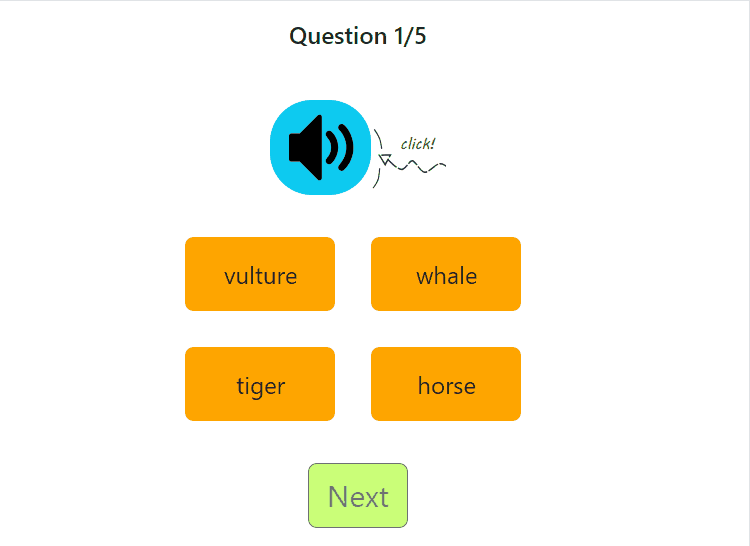I finally got an excuse to learn unit testing. With the grace of Allah, I built 2 quiz games where the player listens to a sound and matches it with the correct option. Here’s what one of the games look like:

When I started working on the last quiz game, I realised I was tired of copying the quiz generation code from the one I built earlier. Though I had to tweak some of the details for each quiz, I used the same pattern for generating questions. I also ran into some weird cases, like the code generating more questions and options than I wanted, or generating questions without answers in them. I took all these issues as a sign to build a sound MCQ (multiple-choice questions) utility, and use the opportunity to learn unit testing.
My unit testing journey before this involved reading many articles and opinions about unit testing online, and trying out one tutorial. Through my haphazard research, I learned that writing code with unit tests is a good way to make sure your functions and classes work the way you want them to, instead of writing code and hoping it works well in all cases. Since I need predictable output when generating questions, unit testing seemed like the best way to go.
I wanted to use Vitest because I’ve had a good experience building projects with Vite lately; Vite’s build speed makes me happy. In the end, I chose Jest because it’s battle-tested. As a newbie to unit testing, it makes more sense to start with simple, more established tools since they have the community and resources to help you when you get stuck.
So, I downloaded Jest and got to work.
In the next article, I’ll talk about the mistakes I made writing my first tests, In shaa Allah.